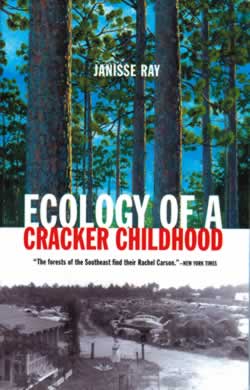
The Natural Georgia Series: The Fire Forest
Longleaf Pine-Wiregrass Ecosystem

 |
The Natural Georgia Series: The Fire ForestLongleaf Pine-Wiregrass Ecosystem |
 |
 Forest
Beloved
Forest
BelovedThe landscape that owns my body is the longleaf pine. I was born to it, as my ancestors for seven generations were born to it, although as a child I did not know its name, or its habits, or the names of its inhabitants. All this I have come to know.
Maybe through my genes I inherited a vision of the original longleaf pine flatwoods, because I seem to remember their endlessness. I recollect when the coastal plains of the South were one daybreak-to-dark, rust-and-bronze longleaf forest. It is a monotony one learns to love, through days and seasons and years, for this is a landscape of loyalty, that you devote yourself to more with the passing years, like a beloved friend. The more you know of it, the more you love it. The more it gives you, the more you give in return. A longleaf pine forest never tells its secrets at first meeting, but reveals them slowly over time-and a longleaf forest is full of secrets.
In a longleaf forest, miles of trees forever fade into a brilliant salmon sunset and reappear the next dawn as a battalion marching out of fog. The tip of each needle carries a single drop of silver. The trees are so well spaced that their limbs seldom touch and sunlight streams between and within them. Below their flattened branches, grasses arch their tall, richly dun heads of seeds, and orchids and lilies paint the ground. Purple liatris gestures across the landscape. Our eyes seek the flowers like they seek the flashes of Bachman's sparrows and ruby-crowned kinglets, and the careful crossings of fox squirrels and gopher tortoises.
But mostly you do not see vastness, but little pieces of longleaf, a few acres here and a few there, as fragmented as our lives have become, and you have to wait longer to know the essence of this forest.
What thrills me most about longleaf is how the pine trees sing. Even in the fragments you can hear the music. Horizontal limbs of flattened crowns hold the wind as if they are vessels, singing bowls, and stir in them like a whistling kettle. I lie in thick wiregrass-and in lopside Indiangrass and splitbeard bluestem-covered with sun, and listen. The music cannot be heard anywhere else on the earth.
In the choirs of the original groves, the music must have resounded for hundreds of miles in a single held note of rise and fall, and stirred the red-cockaded woodpeckers nesting in the hearts of the pines, where I also nest. Now the music falters, a great tongue chopped in pieces.
I drink in longleaf pine forest like water. This is the homeland that built us. Here we walk shoulder to shoulder with history-our history. We are in the presence of something ancient and venerable, perhaps of time itself, its unhurried passing marked by immensity and stolidity, each year purged by fire, cinched by a ring. Here we see ourselves as human, as southern, in a natural order that is again grand and whole and functional. I am humbled, not frightened, by it. I am comforted. It is as if a roundtable springs up in the cathedral of pines and God graciously pulls out a chair for me, and I no longer have to worry about what happens to souls.
Janisse Ray, a writer and environmental activist, is the author of Ecology of a Cracker Childhood, a nonfiction account of growing up in a junkyard in the ruined longleaf pine-wiregrass ecosystem of Appling County.
Read and add comments about this page
Go back to previous page. Go to Fire Forest contents page. Go to Sherpa Guides home.